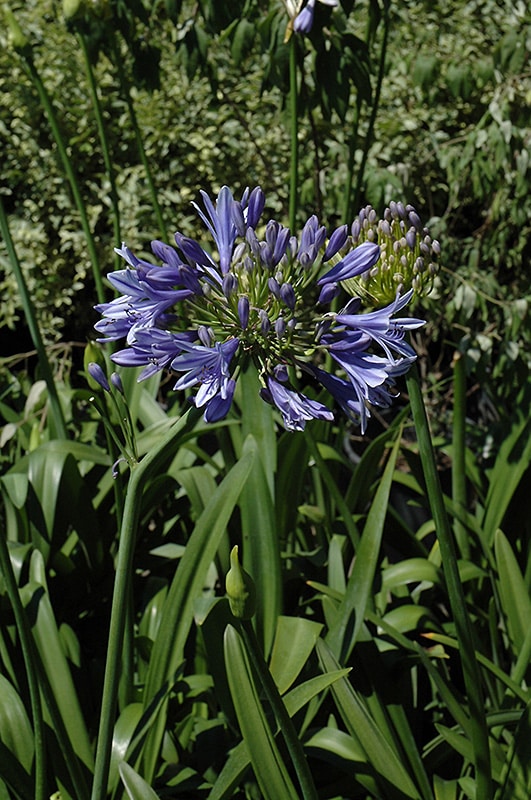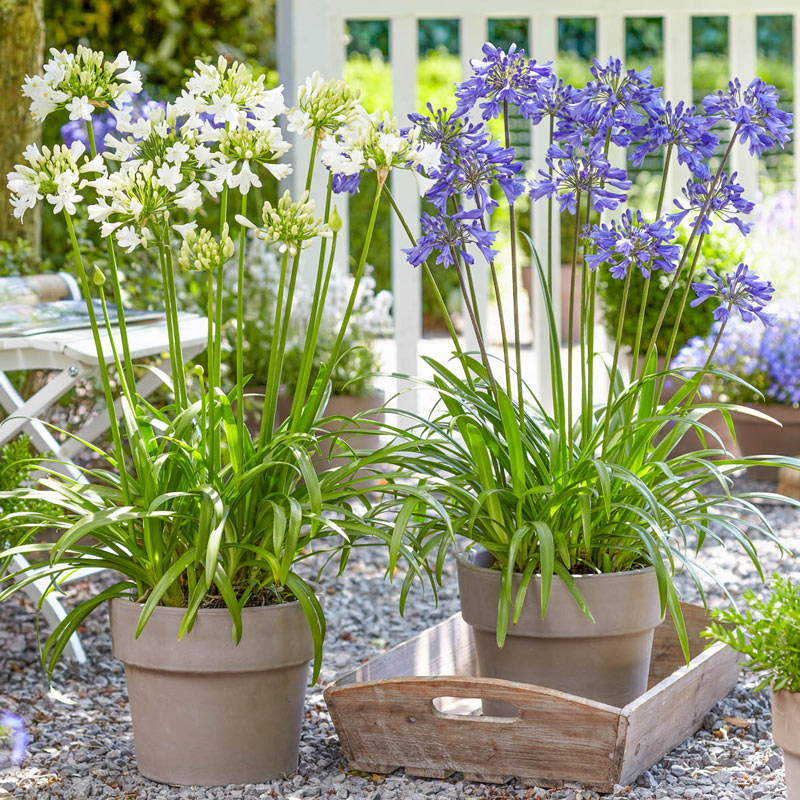Agapanthus Varieties: Choosing the Best for Your Landscape
Agapanthus Varieties: Choosing the Best for Your Landscape
Blog Article
Unleashing the Secret to Successful Agapanthus Farming: Advice for a Flourishing Garden
In the realm of gardening, growing agapanthus efficiently calls for a calculated technique that encompasses different facets of plant care. By recognizing the subtleties of agapanthus growing, one can produce an environment where these plants grow and grow generously.
Planting Agapanthus: Ideal Practices
When growing Agapanthus, appropriate soil prep work is crucial for making certain successful development and advancement of these beautiful blossoms. Agapanthus, commonly called Lily of the Nile or African lily, thrives in well-draining dirt with a slightly acidic to neutral pH level - Agapanthus. Before growing, it is important to change heavy clay dirts with raw material such as compost or peat moss to enhance water drainage and provide essential nutrients for the plants
To grow Agapanthus, choose an area that gets complete sunlight to partial color, as this will promote healthy and balanced growth and plentiful flowering. Dig an opening twice the diameter of the plant's root sphere and place the Agapanthus at the very same depth it was formerly growing. Carefully backfill the opening with dirt, pushing down firmly to eliminate any air pockets around the roots.
Water the recently grown Agapanthus thoroughly and continue to keep the soil equally moist, particularly throughout the plant's active expanding season. Agapanthus. Using a well balanced plant food once a month can further support the plant's development and flowering. By adhering to these finest practices for planting Agapanthus, you can create a spectacular screen of these exciting flowers in your garden
Suitable Dirt Issues for Agapanthus
For optimal development and growing success of Agapanthus plants, making certain the dirt problems are perfect is crucial. Agapanthus prefers dirt that is abundant in nutrients, so including a well balanced plant food throughout the expanding period can promote healthy growth and vivid blossoms.

Watering and Feeding Tips
To make certain healthy growth and vibrant flowers, appropriate watering and feeding strategies are vital for effective Agapanthus farming. Agapanthus plants gain from normal watering, particularly throughout the expanding season. It is recommended to water deeply as soon as a week, guaranteeing the soil is damp however not waterlogged. During hot weather condition or in pots, even more constant watering might be necessary to stop the soil from drying entirely.
When it pertains to feeding Agapanthus, a well balanced plant food with equal parts nitrogen, phosphorus, and potassium can be applied in the springtime to advertise healthy growth and blooming. Slow-release plant foods are excellent for giving nutrients slowly over a prolonged period. Stay clear of over-fertilizing, as this can cause extreme foliage development at the expenditure of blossoms.
Furthermore, including natural matter like garden compost right into the dirt can boost nutrient levels and improve dirt framework, helping in the overall health and wellness of the Agapanthus plants. By complying with these watering and fertilizing pointers, gardeners can guarantee their Agapanthus plants prosper and produce magnificent display screens of blossoms.
Pruning and Deadheading Techniques
Correct trimming and deadheading techniques play a crucial duty in preserving the wellness and appearances of Agapanthus plants, enhancing the vital techniques of watering and fertilizing for effective growing. Trimming Agapanthus includes eliminating spent blossom heads, dead or yellowing leaves, and general shaping of the plant to promote much better development. Deadheading, the process of removing faded blossoms, not just improves the plant's look but additionally motivates additional growing.
When deadheading Agapanthus, it is recommended to see this site trim off the flower stem at the base making use of sharp, clean shears. This process reroutes the plant's energy from seed manufacturing back right into root and vegetation growth, promoting a much healthier and more durable plant. Regular deadheading can prolong the growing period of Agapanthus and stop self-seeding, which can bring about overcrowding.
In regards to pruning, Agapanthus typically take advantage of a light trim after blossoming to clean up the plant and motivate fresh development. Reducing the invested flower stems and getting rid of any dead or damaged foliage helps maintain the plant's vitality and overall look. Nevertheless, it is important to avoid reducing right into the crown of the plant, as this can deteriorate its health and wellness.

Protecting Agapanthus From Pests and Diseases
Implementing reliable insect and disease management approaches is vital to protecting the wellness and vitality of Agapanthus plants in farming. One typical pest that advice impacts Agapanthus is the Agapanthus borer, a caterpillar that tunnels into the plant, triggering damages to the flowers and fallen leaves.
In addition to bugs, Agapanthus are at risk to conditions such as root rot and fungal fallen leave places. By staying watchful and addressing bug and disease issues quickly, garden enthusiasts can aid their Agapanthus thrive and webpage flourish.

Final Thought
In final thought, successful farming of agapanthus requires proper growing methods, excellent soil problems, appropriate watering and fertilizing, regular pruning and deadheading, and protection from bugs and diseases. By following these pointers and tricks, garden enthusiasts can guarantee a prospering garden full of lovely agapanthus blooms. Agapanthus. Keep in mind to keep consistent treatment and focus to detail to advertise the health and durability of these stunning plants
When planting Agapanthus, appropriate dirt preparation is necessary for guaranteeing effective development and development of these gorgeous blossoms.Water the freshly grown Agapanthus thoroughly and continue to keep the dirt evenly moist, particularly throughout the plant's energetic growing period.For optimum growth and blooming success of Agapanthus plants, making sure the dirt problems are excellent is essential. When hair transplanting or growing Agapanthus, make certain the dirt is well-prepared to supply the essential structure for the plants to develop themselves successfully. One common pest that affects Agapanthus is the Agapanthus borer, a caterpillar that tunnels into the plant, triggering damages to the blossoms and fallen leaves.
Report this page